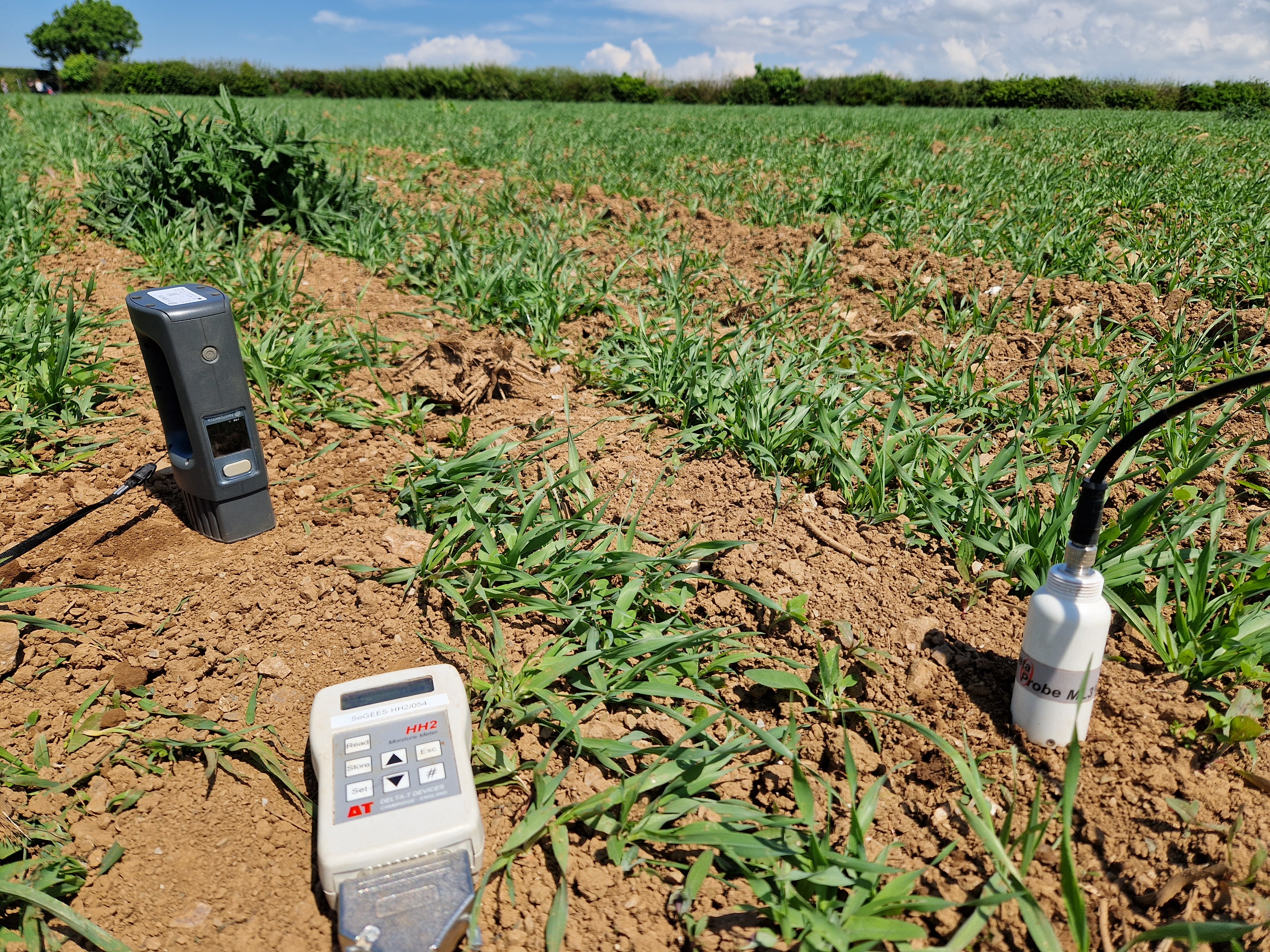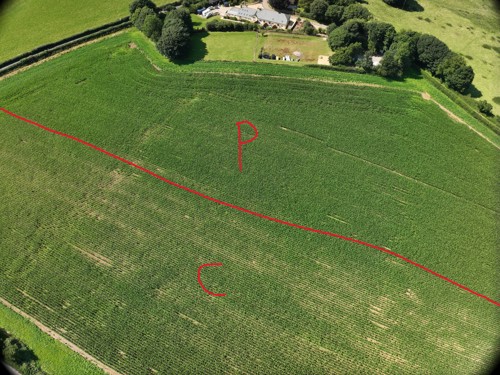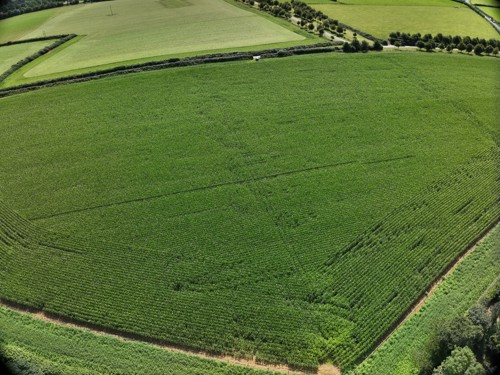




This Farm Net Zero trial investigates the effect of alternative cultivation systems on soil and yield of maize. Two systems will be investigated:
Strip tilling involves cultivating narrow strips of soil where seed is drilled, leaving the ground between the strips undisturbed. The strips are prepared either by a one-pass till-and-drill combination based on a special cultivator plus standard precision drill units, or by a 2-pass system where the ground is strip tilled at the first pass and drilled at the second.
This field lab is funded through the Community Lottery Funded Farm Net Zero Project.
The trial is based on an initial trial carried out by Catherine and Malcolm Barrett in 2022, results of which can be found in the Results and Reports section on the brown banner above.
Maize is a very valuable silage crop for the dairy industry due to its high starch and high dry matter yield potential. Traditionally maize is established through heavy cultivation, usually including ploughing and power harrowing. This heavy cultivation combined with shallow root systems and late harvest period can leave the soil in maize fields vulnerable to erosion and runoff, especially at harvest. This runoff, often phosphate-heavy, can cause pollution to nearby watercourses.
By trying alternative establishment methods including strip tilling, farmers are hoping to:
Year 1: Farms will drill trial strips using normal practice (control), strip till and disc cultivated. Farmers who plan to grow maize in the following year will plant green cover crops when appropriate to assess effect of different green covers on yield and soil health metrics.
Soil samples and yield analysis will be undertaken at harvest to assess any differences due to drilling practice.
Year 2: the same drilling techniques will be repeated either on the same fields to look at long term effects, or following overwinter green manure mixes to compare effects of cover crops and cultivation on yield and quality of maize.
The field lab has now completed and the final report can be found in the reports and results section of this page (click on the brown banner above). A summary can be found below.
Maize is an important crop for dairy farmers but is often associated with a high risk of soil erosion and runoff. This is mainly due to a late harvest, wide rows and the use of heavy cultivation leading to unstructured and unstable soil profiles. During the field lab, farmers trialled alternative methods of establishing their maize, including strip tillage, disc cultivation and direct drilling, and assessed the impact on yield, soil structure and fuel use.
Summary of results:

Take home messages:
The trial has shown that maize is not dependent on ploughing, and that yield, and quality are not influenced by cultivation system, provided an adequate seed bed is created. It has also shown that disc cultivations, strip till or direct drilling can be adopted even in soils which have been regularly ploughed and intensively cultivated, and the benefits also have a legacy effect benefitting soil in later years.
The value of under-sowing the maize crop during its growing season (rather than after harvest) was also highlighted, as a means of soil protection during and after harvest. Reduction in fuel use reduces the emissions associated with the crop, and less intensive cultivation reduces the number of passes, saving farmer time. Although all cultivation causes loss of soil organic matter, ploughing and power-harrow cultivating is likely to be worst.
With only a few weeks before harvest, the group are eagerly looking at the crop to try to estimate yields.
Drone photos were taken at the Duchy trial field in July and August this year (thanks to Sophie Rapson) to see if there were any obvious differences between the plots. These seemed to show that in July the maize in the ploughed control plot was doing better than in the min tilled trial plot.

However, a later photo of the field taken a week ago at the end of August seems to show that the maize has caught up - at least, there is no obvious visual difference.

This growth lag has been echoed in a different field lab looking at different cultivation methods in horticulture, where strip tilled cabbages appear to be two weeks behind the ploughed crop. Let's hope they catch up like the maize appears to have done.
The yield results at harvest will show whether or not the maize from both plots yields the same.
Plymouth University researchers visited Malcolm and Catherine Barrett’s farm this week. They were using specially designed sensor equipment to gain an accurate picture of the soil structure in the field to determine the legacy effects of the different tillage techniques trialled last year. The field is now in spring barley, but it's hoped that the long term affects of minimum tillage will have had a lasting impact on the soil structure.

Photo credit - Dr Nicola Mansfield
By testing alternatives to ploughing, farmers are hoping to reduce the harmful impact of maize growing on soil structure, causing less erosion and runoff and reduce costs by using less fossil fuels.

Results from the trial are still being processed but our initial thoughts are noted here. There are 3 fields with different systems:
The first set of results comparing strip till with ploughing showed that a strip till system didn't result in visibly lower yields than a standard plough based system.
When the weight of the yields were compared they showed that strip tilled plots had 5% less yield than ploughed strips, but with a significantly lower cost of production with less time and fuel use.
There were more weeds present in the strip tilled area despite the same herbicide treatments on all plots. However, this was mainly grass weeds and biennial crops like thistles which were not effectively controlled by the pre drilling glyphosate.

In the second field the comparison was between a strip till, light cultivations and direct drilling. Drilling system and pre drill cultivation did have some effects, with the highest yield being a strip till plot followed by the min-till plot. The lowest yield was the direct drilled plot, although differences were not large.
There was again little to see from what the crop looked like to determine which was better without the weights.

The third set of results are still to be analysed.

After a difficult few weeks of spring the farmers have drilled the maize in the trial plots
May 23
September 23
October 23
October 2023
May 2024
September 2024
October 2024

Soil Association
Bristol / UK-wide
Arable & Soils Advisor at Soil Association, and farmer. I ran the family farm in Devon for 25 years, farming dairy, then organic beef, sheep and arable units with holiday cottage conversions. Former chairman of a local farmer owned co-op grain store, and involved in the grain supply chain nationally.

University of Plymouth

University of Plymouth
Plymouth